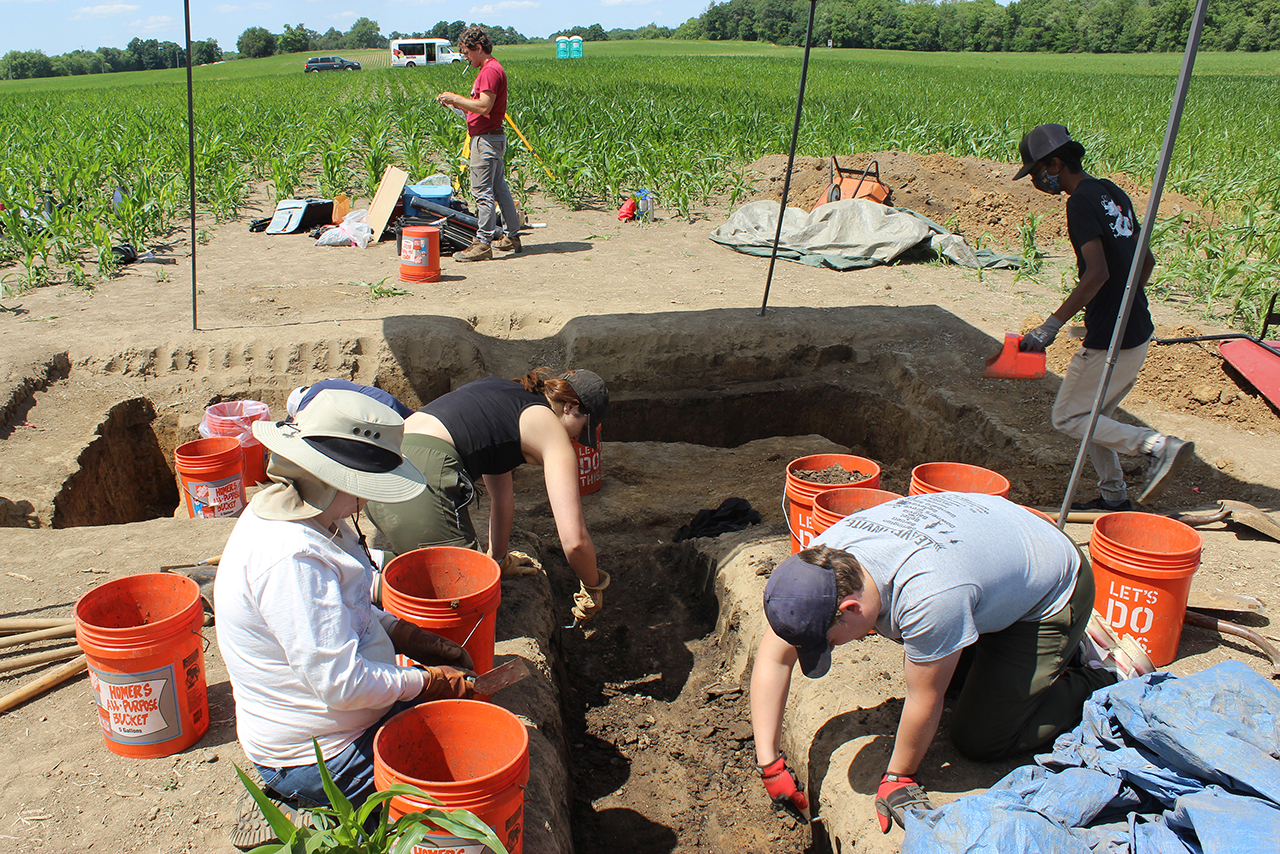A group of Illinois State students received hands-on training in archaeology while uncovering the history of an ancient Native American village this summer in a cornfield just south of Bloomington.
Dr. Logan Miller, associate professor of anthropology, has led the Department of Sociology and Anthropology’s annual field school at the Noble-Wieting archaeological site near Heyworth since 2017. This year, 10 undergraduate and graduate students joined him over the course of four weeks from mid-May to mid-June to investigate the remains of one of the village’s buildings.
The group dug about a foot into the farm field to reveal the foundation of a home where a magnetic field map had indicated the likely location of a burnt structure. Miller said the wood house was intentionally destroyed by the Indigenous residents in possibly a ceremonial act when they abandoned the village, not as the result of an invasion or other violence.
Each year Miller and his students have been using archaeological methods to gain a better understanding of why a multicultural group of Indigenous people from several different regions chose this location bordering the Kickapoo Creek to call home for several decades around A.D. 1300. Most of the other larger contemporary villages in the region have been found on the Illinois and Mississippi Rivers.
The researchers are also trying to figure out what life was like in the village, how many people lived here, and why they left. The site comprises roughly 40 buildings encircling a burial mound, and the archaeological evidence suggests the residents relied on a mix of hunting and farming to survive.
Archaeological work can be tedious. The students spent their days digging into the hard clay and ash and then carefully sifting through buckets of dirt searching for artifacts. Their more noteworthy discoveries were an elk antler (elk roamed Illinois before American settlers wiped them out in the 1800s), arrowheads and other stone tools, and a charred corncob. “We have the oldest beans and the oldest corn in McLean County, which is fun because they still grow corn and beans in these very same fields,” Miller said.
The students carefully noted where the items were recovered and then washed and sorted the materials in the lab. They planned to send samples of the recovered artifacts for radiocarbon dating.
“What I love the most is that you’re literally touching history,” said Georgana DuCharm, a senior anthropology major. “You’re touching something that someone else created 800, 700 years ago. … That’s what makes archaeology so cool to me.”
Field school photo gallery






